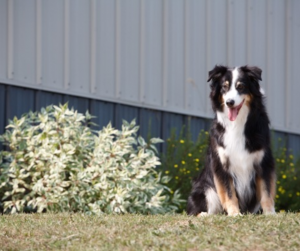 Fall Pet Allergies: As the heat and humidity of the summer begins to wane, many of us look forward to the cooler, fall weather and, at least in the northeast, the beauty of the changing foliage. For many of us including our pets, this change of season is the start of fall allergies.
Fall Pet Allergies: As the heat and humidity of the summer begins to wane, many of us look forward to the cooler, fall weather and, at least in the northeast, the beauty of the changing foliage. For many of us including our pets, this change of season is the start of fall allergies.
Cats and dogs have seasonal allergies (atopy or allergic dermatitis) to mold and pollen just like we do. The main difference is the way in which they show it. Allergies are a hypersensitivity or immune system overreaction against common, otherwise harmless substances in our environment. These allergens get in through the skin because of abnormalities in the skin’s protective barrier and/or abnormalities to the matrix between skin cells. Similar to the way water seeps into a brick wall with crumbling mortar.
Common Causes and Symptoms:
Tree, grass, and plant pollens or mold commonly cause seasonal allergies. In pets that have year-round environmental allergies, indoor allergens are likely to be the cause because they are exposed to them continuously. In fact, 75% of dogs with year-round allergies are allergic to house dust mites, an indoor allergen. Food allergies can also be the cause of year-round allergies, but that is a topic for another time.
Most dogs and cats typically begin showing seasonal allergies in the first one to three years of life. The symptoms may initially be mild but may get worse over time. Any dog can become allergic. Certain breeds are overrepresented (because there is a hereditary component). They include the Golden Retriever, Labrador Retriever, West Highland White Terrier, Bulldog, Boxer, Pug, Shih Tzu, Lhasa Apso, and the Chinese Shar-Pei.
The most common symptoms include licking, scratching, chewing, and rubbing at the feet, face, hind end, armpits and abdomen. In cats, they may present as a raised, crusty skin lesion called milliary dermatitis. Allergies can also present as recurrent skin and ear infections which can cause hairlessness, redness, thickening and pigmentation of the skin. Bacteria causes these infections. As well as yeast which live naturally on the skin. When present, they can make the itching associated with atopy more intense.
The diagnosis of seasonal allergies is most frequently based on clinical signs and age of the patient. A positive response to low-dose steroids can also aid in the diagnosis. The specific allergens that your pet is allergic to can only be determined by a blood test or intradermal skin testing.
Treatment of environmental allergies is centered on controlling the itch or decreasing the immune system’s overresponse to normal allergens found in the environment. Discuss treatments with your vet. They may include:
Avoiding allergens:
This is usually not entirely possible. Brushing the hair coat can help remove allergens from the fur and skin, reducing exposure. Wearing a t-shirt and/or foot protection may also limit exposure and absorption through the skin. For dust mite allergies, washing beds frequently or using dust mite covers may help to limit exposure. Avoiding stuffed toys can also help. Using an air conditioner in the summer or a HEPA filter can reduce allergens. Keeping pets indoors when mowing the lawn and stirring up allergens may help. Frequent bathing with a hypoallergenic shampoo and using a conditioning rinse or spray to moisturize the skin is beneficial for many pets.
Medications:
Many medications are available to reduce the signs and symptoms but they do not get rid of the allergy. They include antihistamines such as Benadryl® and Claritin®, omega 3 fatty acids high in EPA and DHA, steroids such as prednisone or dexamethasone, immune modulators such as cyclosporine, Janus kinase inhibitors such as Apoquel®, and a new soon to be available Interleukin-31 antibody.
Allergen Specific Immunotherapy:
This treatment regimen is dependent upon allergy testing. Once your pet’s allergens are identified, a specific “allergy vaccine” can be made to desensitize the immune system to specific allergens. This is effective in about 70% of dogs and is most beneficial when started at a young age. Desensitization is injected. Oral therapy under the tongue is another option. It may require six months to two years to see a benefit.
If you think your pet may have fall allergies, speak with your veterinarian, so together, you can make the best treatment choice for you beloved companion.
To treat your pet to healthy food and/or toys, visit Kissimmee Valley Feed! Check out our dog/cat selection here.
Article Source: Nutrena





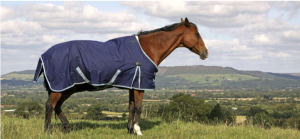 With icy weather only a few months away, now’s the time for horse owners in many parts of the world to perform seasonal maintenance around the farm to ensure their horses remain healthy and snug throughout the colder months.
With icy weather only a few months away, now’s the time for horse owners in many parts of the world to perform seasonal maintenance around the farm to ensure their horses remain healthy and snug throughout the colder months. Fall Pet Allergies: As the heat and humidity of the summer begins to wane, many of us look forward to the cooler, fall weather and, at least in the northeast, the beauty of the changing foliage. For many of us including our pets, this change of season is the start of fall allergies.
Fall Pet Allergies: As the heat and humidity of the summer begins to wane, many of us look forward to the cooler, fall weather and, at least in the northeast, the beauty of the changing foliage. For many of us including our pets, this change of season is the start of fall allergies.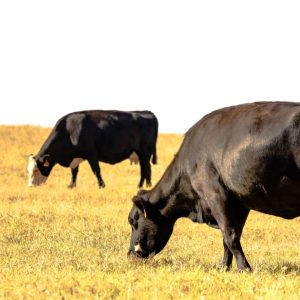 The Benefits of Fall Forage for Your Livestock: Fall is just around the corner, and that means it’s time to start thinking about fall forage for your livestock. As the temperature cools and the days get shorter, it’s important to ensure that your animals are getting the right nutrients to maintain their body condition going into the winter months. Let’s go over some of the benefits of fall forage! Check out all things related to animal health available at Kissimmee Valley Feed
The Benefits of Fall Forage for Your Livestock: Fall is just around the corner, and that means it’s time to start thinking about fall forage for your livestock. As the temperature cools and the days get shorter, it’s important to ensure that your animals are getting the right nutrients to maintain their body condition going into the winter months. Let’s go over some of the benefits of fall forage! Check out all things related to animal health available at Kissimmee Valley Feed 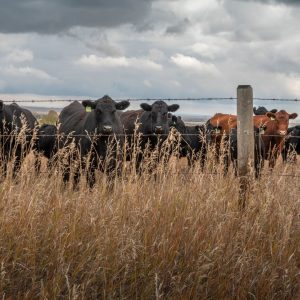 The Importance of Fall Pasture Management:
The Importance of Fall Pasture Management: 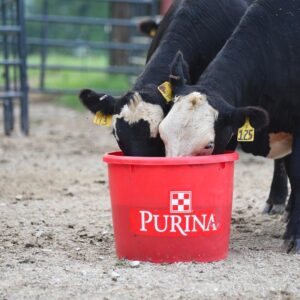 Fall is approaching, which means it’s time to prepare your herd for the months ahead. Cattle nutrient requirements vary from season to season, so it’s important to evaluate the effectiveness of your feed program. Check out these tips for creating a healthy mineral program and preparing your cattle for fall.
Fall is approaching, which means it’s time to prepare your herd for the months ahead. Cattle nutrient requirements vary from season to season, so it’s important to evaluate the effectiveness of your feed program. Check out these tips for creating a healthy mineral program and preparing your cattle for fall.